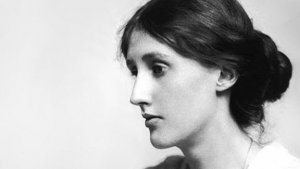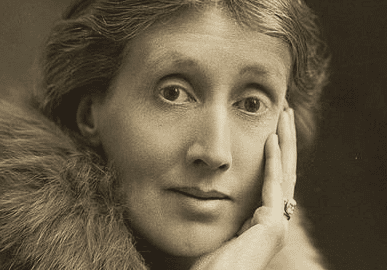Virginia Woolf: A Story of Silenced Trauma

Today, we’re going to talk about the tragic life of one of the most important authors of the 20th century. She is renowned among other great writers such as James Joyce, Franz Kafka, and Thomas Mann. Her work was innovative in its use of internal monologue, a literary device that she handled expertly to share the characters’ most intimate thoughts with her reader. We’re obviously talking about the fascinating and brilliant Virginia Woolf.
Her life is an example of the damaging silence surrounding the horror and devastating consequences of child sexual abuse. To cover up her tragic story, people said that she suffered from a hereditary mental illness.
Woolf was allegedly too sensitive to normal, everyday conflict. Incredibly, some people still perpetuate the idea that the sexual abuse she suffered as a child was not the cause of her lifelong battle with psychosis or why she eventually committed suicide. Fortunately, today we know enough about what happened to say that those ideas are false. The sexual and psychological abuse that Woolf experienced from a very young age caused her illness.
Let’s re-visit the work and life of this revolutionary woman. In spite of all her suffering, she achieved great things with her writing. In her book Orlando, she successfully puts a man in a woman’s skin and she declares her rights as a woman in A Room of One’s Own.
The early life of Virginia Woolf
Virginia Woolf was born in London on January 25th, 1882. Her parents had a complicated marriage. When she came into the world, her parents already had children from previous marriages. Her father was an acclaimed editor, critic, and biographer.
Virginia’s mother never paid attention to her nor even spent a moment alone with her. Her father was an intimidating figure. Her childhood home was a cage for Virginia.
The early death of her mother, a sister, and later her father had a profound impact on Virginia. Losing loved ones is always traumatic, but her father made the situation even worse by forbidding anyone to speak of those who had died. That was the beginning of a terrible, forced silence in Virginia’s life. From her early years, she wasn’t allowed to express emotions of any kind.

Her adult life
When her father died, Virginia went to live with her brothers and sisters. That’s when she started to suffer from psychotic breaks that would plague her for the rest of her life. Woolf sometimes managed to overcome them, but only for a short time.
Her new home in Bloomsbury became a meeting point for her brother’s old college friends. Among them were well-known intellectuals such as Bertrand Russell. They made up a group of eccentric novelists, poets, and painters known as “The Bloomsbury Circle.” There, Woolf met Leonard Woolf, the man she would later marry.
The couple married when Woolf was thirty years old. At that point, she had already suffered several mental breakdowns followed by periods of severe depression. Her husband kept a journal of her moods. For Virginia, writing allowed her to express her tragic experiences and repressed emotions.
Her relationship with her husband was stable, and a source of comfort for them both. In 1917, they created the Hogarth Press, which went on to successfully publish Woolf’s work and that of other great writers such as Katherine Mansfield, T.S. Eliot, Sigmund Freud, and Laurens van der Post.
Sexual abuse
Virginia Woolf started being sexually abused at the hands of her stepbrothers, who were nearly 20 years older than her, at the age of seven. When it started, both of her parents were still alive. People say that Virginia never told them about it, but it’s possible that they had some idea about what was happening to her.
When Woolf was ten, she started to write and talk openly about her experiences. The sexual abuse was profoundly traumatic and went on until she was 24 years old. It was a horrible “secret” that those around her knew about, but did nothing to stop.
A tragic end
Virginia Woolf suffered from a mental illness that we know today as bipolar disorder. After she finished the manuscript for what would be her final novel, Woolf fell into a depression. When World War II broke out and her house in London was destroyed, Woolf’s condition worsened and she no longer felt capable of working.
On March 28th, 1941, Virginia Woolf put on her coat, filled her pockets with rocks, and threw herself into the nearby River Ouse. She wrote a goodbye letter to her husband, which read:
“Dearest,
I feel certain I am going mad again. I feel we can’t go through another of those terrible times. And I shan’t recover this time. I begin to hear voices, and I can’t concentrate. So I am doing what seems the best thing to do. You have given me the greatest possible happiness. You have been in every way all that anyone could be. I don’t think two people could have been happier till this terrible disease came. I can’t fight any longer. I know that I am spoiling your life, that without me you could work. And you will I know.
You see I can’t even write this properly. I can’t read. What I want to say is I owe all the happiness of my life to you. You have been entirely patient with me and incredibly good. I want to say that – everybody knows it. If anybody could have saved me it would have been you. Everything has gone from me but the certainty of your goodness. I can’t go on spoiling your life any longer.
I don’t think two people could have been happier than we have been.”
-Virginia Woolf-

Virginia Woolf’s mental illness
Today, psychologists, psychiatrists, and educators understand the serious psychological consequences of sexual abuse in children and teens. Fortunately, we now have several academic studies that confirm the cause of Virginia Woolf’s mental illness. It was the abuse she suffered at the hands of her two stepbrothers, with the tacit consent of those who were supposed to protect her.
These days, we can speak openly about child sexual abuse. It’s absolutely crucial to put an end to attempts to silence this horrible and intolerable crime.
No evidence supports the claim that Virginia Woolf inherited her mental illness. It’s much more plausible to suppose that her emotional problems resulted from prolonged sexual abuse.
Researchers examined Virginia Woolf’s sexual victimization as a case study in light of contemporary literature about the impact of child sexual abuse on human development. Many of Woolf’s mental health symptoms are consistent with the clinical literature on child sexual abuse.
Woolf’s legacy
In spite of her tragic life, Woolf left an important mark on the literary world. Not only that, but she made important inroads in the fight for gender equality. In her famous book, A Room of One’s Own, Woolf argued that the main problem for women was their lack of economic independence. Women needed independence so they could have their own space and, in Woolf’s case, a place to write novels in peace.
In Orlando, she dared to put a man into a woman’s role. She wanted to show the world how it was much easier to be a man in this world than a woman. Virginia Woolf had the courage to touch on taboo subjects such as homosexuality and sexuality. Other famous works by Woolf include The Waves and Mrs. Dalloway.
This text is provided for informational purposes only and does not replace consultation with a professional. If in doubt, consult your specialist.








